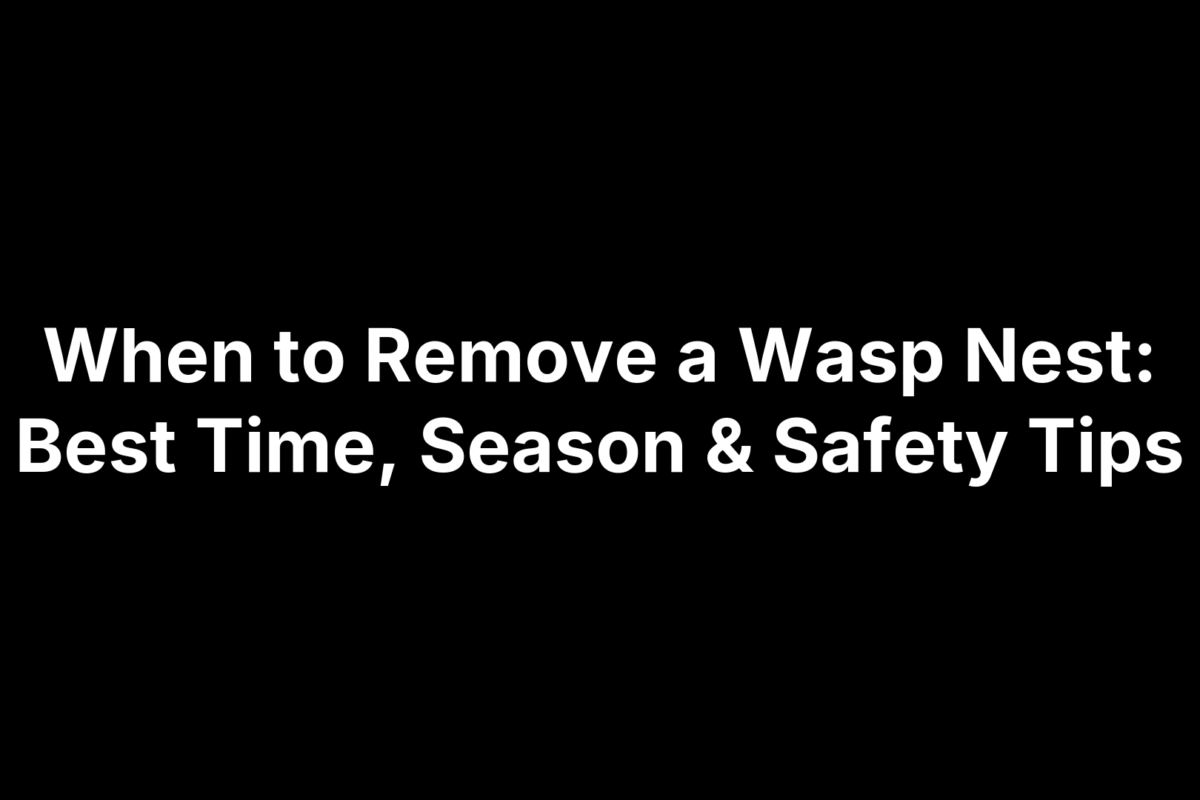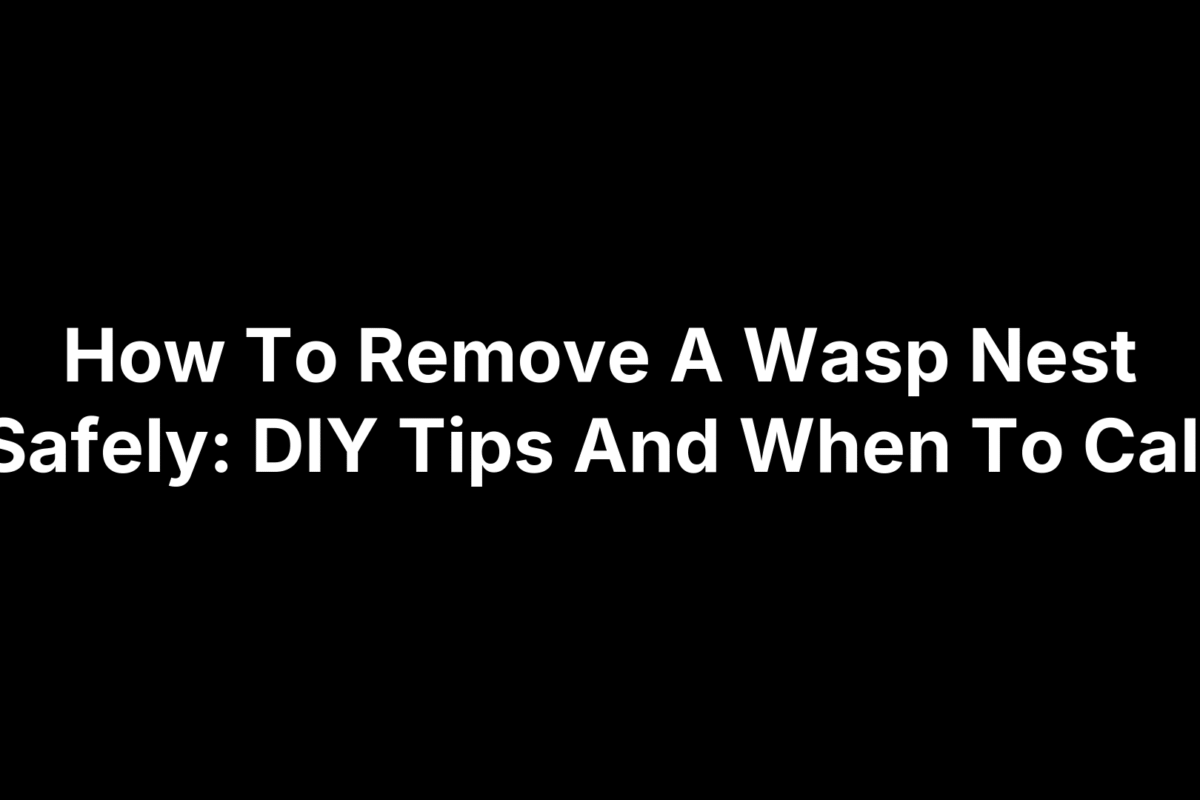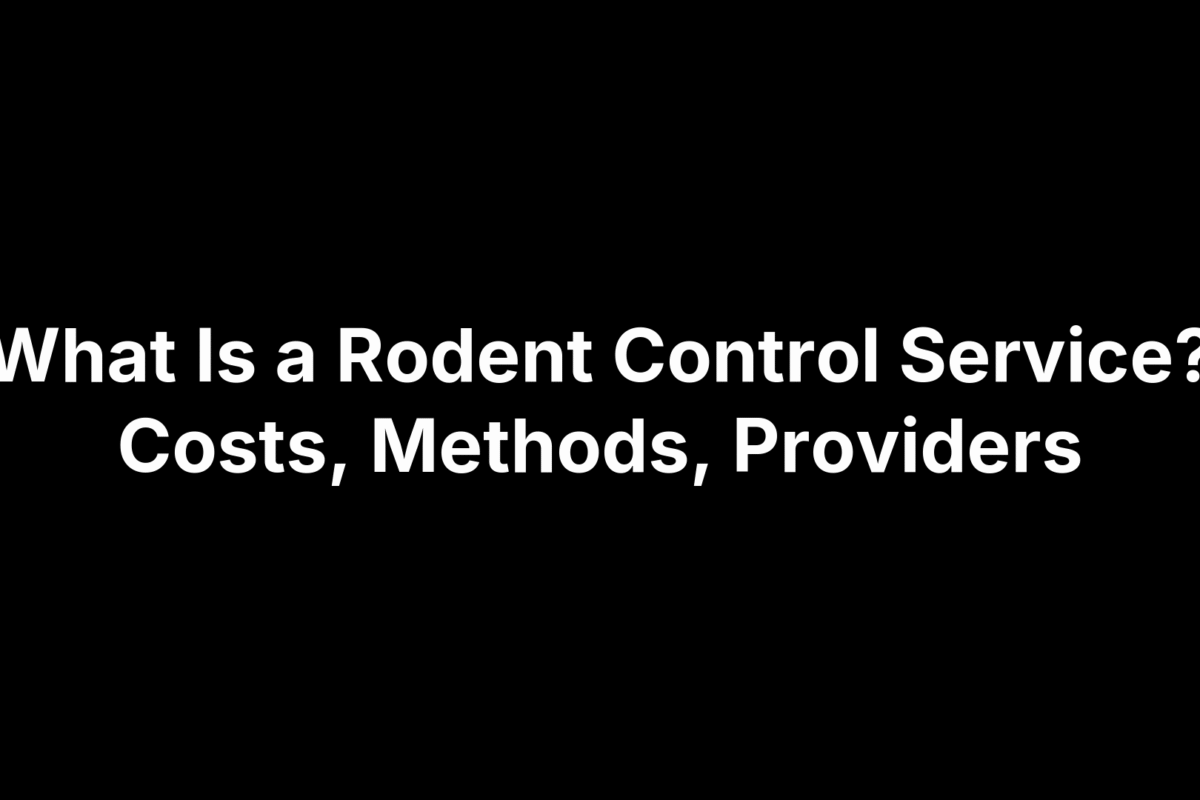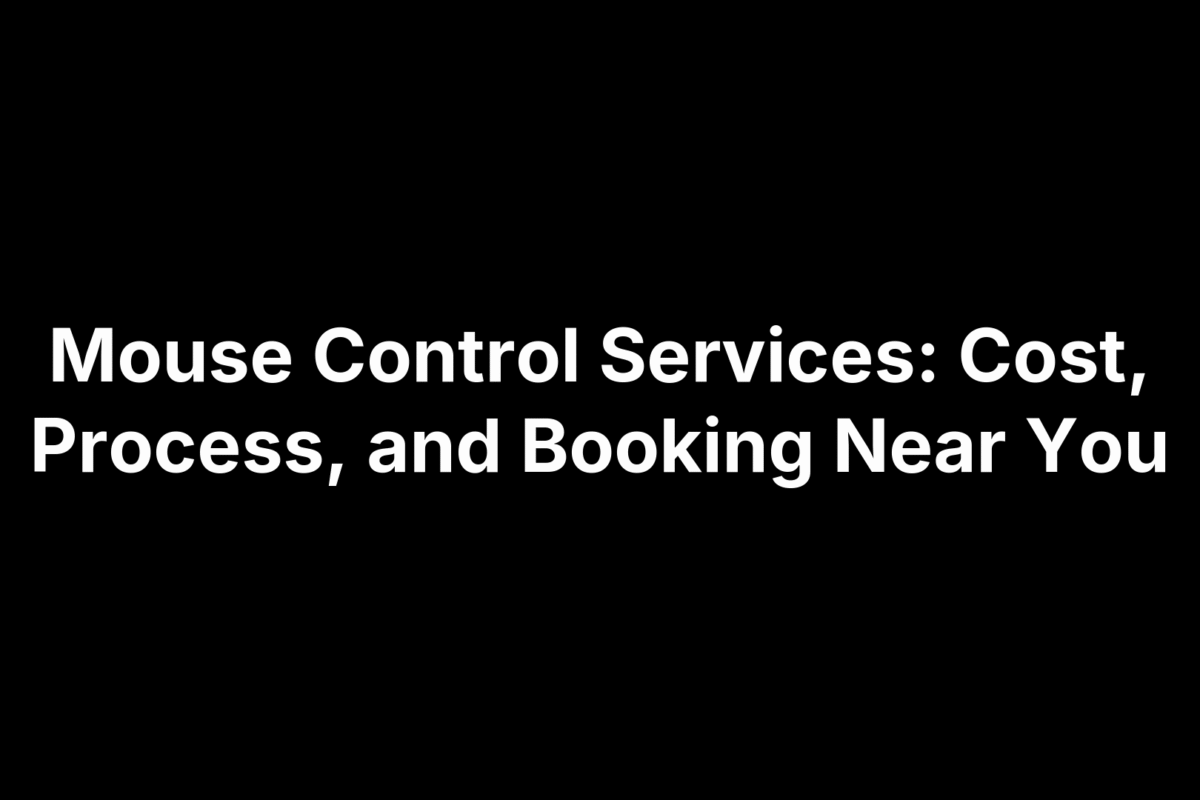Wondering when to remove a wasp nest? Timing is everything. “When” means the safest, most effective moment to act—by season, time of day, and weather—based on the species and where the nest sits. Choose poorly and you risk stings, stragglers, or a quick rebuild. Choose well and you reduce danger, ensure most of the colony is present, and fix the problem with fewer chemicals, less stress, and better long‑term results.
In this guide, you’ll learn how wasp life cycles shape your window for removal, how to identify the nest you’re facing, and the best times of year and day to act. We’ll cover weather cues that make the job safer, how to decide whether to remove or leave a nest, essential safety gear, steps for small accessible nests, special cases (ground and wall voids), eco‑friendly options, cleanup and prevention—and when it’s smarter to call a professional.
How wasp life cycle and behavior affect the best removal time
Knowing when to remove a wasp nest starts with how colonies grow and behave. In spring, a single queen builds a small, young nest—this is the easiest, most effective time to control it before numbers explode. By mid to late summer, colonies can reach thousands and produce new queens, making removal riskier and more disruptive. In fall, most workers die off; after the first hard frosts into winter, nests are empty, won’t be reused, and can be taken down safely. Day to day, most foragers are away in daylight and regroup after dark; cool, rainy weather also keeps wasps docile and clustered at the nest.
- Best early window (spring): Small nests, fewer wasps, faster control.
- Peak risk (summer): Large, active colonies; consider pro service.
- Low-risk window (late fall–winter): Nests are inactive/empty and safe to remove.
- Best time of day: After dusk when most wasps are inside and calmer.
How to identify the type of wasp and nest you’re dealing with
Correct ID steers how and when to remove a wasp nest. Observe from a safe distance and note location, shape, size, and activity. Also confirm they’re wasps—not honey bees or bumblebees. Bees should be relocated by a beekeeper, not destroyed.
- Location tells a lot: Heavy traffic to a hole in the ground often signals yellow jackets, which commonly nest underground and can be aggressive. Aerial paper nests are frequently in attics, eaves, roofs, trees, or outbuildings.
- Shape and material: Wasps chew wood into a papery, brittle pulp. You may see small “paper-mache” starts in spring that expand through summer into large shells.
- Size by season: Early nests can be golf-ball sized; by late summer they can be much larger as populations peak.
- Active vs. empty: Watch daytime traffic; after a hard frost into winter, nests are empty and won’t be reused, making removal safer.
Best time of year to remove a wasp nest (spring, summer, fall, winter)
Choosing when to remove a wasp nest depends on the season and colony size. Early action prevents growth; late action often isn’t necessary. Nests are built anew each year and aren’t reused, so winter offers a safe cleanup window, while spring presents the easiest control window before populations surge.
- Spring (best control window): Queens are building small, young nests. Removal is fast and effective before numbers grow. Many pros recommend targeting nests now for long-term relief.
- Summer (highest risk): Colonies can reach thousands and become defensive. If removal can’t wait, consider professional help and plan carefully.
- Fall (often wait it out): Workers decline naturally. If the nest isn’t in a high-traffic area, waiting until after the first hard frost means fewer active wasps and safer removal soon after.
- Winter (safest cleanup): Nests are empty, won’t be reused, and can be taken down with minimal risk. This is ideal for disposal and sealing entry points to prevent next year’s queens from starting new nests.
Best time of day to remove a wasp nest
The best time of day to remove a wasp nest is when most of the colony is home and calmer. Wasps forage during daylight and regroup after dark, so timing your approach when they’re inside boosts effectiveness and limits stragglers that might return and hang around the site for days.
- After dusk to a few hours into night: Most wasps are inside and less active. Plan lighting and clear footing to avoid trip hazards.
- Pre-dawn/early morning: Cool temperatures keep activity low before the sun warms them up.
- Avoid midday/afternoon: Many foragers are out; disturbing the nest now can leave returning wasps to linger—or even try rebuilding nearby.
Weather conditions that make removal safer
Weather can give you a real edge when deciding when to remove a wasp nest. Wasps struggle with wet wings and often hunker down at the nest during rain, which concentrates the colony and slows their response. Cooler snaps and the first hard frost further suppress or end activity, making removal or cleanup far safer.
- During/between rain showers: Transitional breaks around a storm find wasps clustered and sluggish, improving control.
- Cool pre-dawn chill: Lower temperatures tamp down activity; pair with early-morning timing.
- After the first hard frost (fall): Many nests are inactive or empty, ideal for safe removal.
- Calm, dry footing: Choose periods without slick surfaces or strong gusts for safer ladder and product use.
Should you remove the nest at all or leave it alone?
Not every wasp nest must go. Wasps help control garden pests and don’t reuse nests year to year. Your decision hinges on season, location, species, and risk. Weigh nuisance and safety against ecology and cost, then choose when to remove a wasp nest with intention—not fear.
- Leave it if: It’s out of the way, low-traffic, no allergies nearby, and it’s late fall.
- Remove now if: It’s near doors, kids, pets, or inside living spaces; stings have occurred.
- Wait for winter if: The nest is inactive; you want low-risk cleanup and to seal entry points.
- Call a pro if: Large summer colonies, underground yellow jackets, or nests in walls/eaves.
How to tell if a nest is active, dormant, or empty
Before you decide when to remove a wasp nest, verify its status from a safe distance over a few observation windows. Check at dusk or pre‑dawn when most wasps are home, and again on a mild daytime period. Rain and cool snaps can make an occupied nest look quiet, since wasps hunker down and fly less. After the first hard frost and through winter, aerial nests are not reused and are typically empty, making removal far safer.
- Active: Steady traffic to and from the entrance in daylight; increased clustering after dusk; ground nests show frequent comings and goings at a single hole.
- Dormant/low activity: Little to no flight during cool, rainy, or stormy periods, but activity returns in warmer breaks; assume occupied until you confirm across different conditions.
- Empty: No activity observed across multiple checks after a hard frost or in winter; paper nests from prior seasons are not reused and can be taken down safely or left in place.
Safety precautions and gear before you start
Before you decide when to remove a wasp nest, plan for safety. Wasps can sting repeatedly, and even non-allergic people can have strong reactions. Work deliberately, keep kids and pets far away, and only proceed if the nest is small and accessible. Large summer colonies, underground yellow jackets, or nests in walls/eaves are best handled by a professional.
- Protective clothing: Beekeeping suit or thick long sleeves, long pants, closed‑toe boots.
- Face and eye protection: Hood/veil and safety goggles; consider a simple dust mask to avoid inhaling nest debris or residual insecticide.
- Gloves: Thick leather or similar, with sleeves taped or tucked so wasps can’t crawl inside.
- Lighting and footing: Headlamp/flashlight and stable footing; avoid risky ladder setups at night without a helper.
- Tools and containment: Heavy‑duty trash bags, duct tape/plastic sheeting; approved wasp spray if using chemicals.
- Medical readiness: First‑aid kit; anyone with sting allergies should not attempt removal.
Safety checklist:
- Confirm ID: Make sure they’re wasps—not honey bees or bumblebees.
- Pick timing: After dusk/pre‑dawn and in cool, calm conditions.
- Clear the area: Keep bystanders away and plan an unobstructed retreat path.
- Don’t seal exits first: Trapped wasps will find other ways into structures.
Step-by-step for small, accessible aerial nests
For small paper nests hanging from eaves, porch ceilings, or light fixtures, a deliberate, low-risk approach works best. Only proceed if the nest is truly accessible, not deep in a wall or soffit, and you can retreat quickly. Confirm they’re wasps (not honey bees or bumblebees), keep kids and pets inside, and plan your timing before you start.
- Confirm and assess: From a safe distance, verify a small aerial paper nest and steady wasp traffic. If it’s winter/after a hard frost and there’s no activity, you can remove without chemicals.
- Time it right: Work after dusk or pre‑dawn when most wasps are home and calmer; cool, calm weather or a break around rain improves safety and effectiveness.
- Suit up and stage: Wear full coverage (veil/hood, gloves, long sleeves, boots). Set a headlamp, heavy‑duty trash bag, tape, scraper/pruners, and an approved wasp spray if using chemicals.
- Tiny spring nests (optional no‑kill nudge): For very small early nests, wetting the nest on a few occasions can encourage relocation; never use water on larger nests to avoid aggressive, displaced wasps.
- Bag and treat: Gently slip a trash bag over the nest and attachment point, cinch it, then pierce a small hole to insert the spray nozzle. Apply per label; the bag contains exiting wasps.
- Wait, then recheck: Leave the bag in place per label guidance (often overnight). Do not knock the nest down immediately after spraying.
- Detach and dispose: In cool morning hours, seal the bag, cut/scrape the stalk so the nest drops inside, then double‑bag and place in outdoor trash per local rules. Do not compost treated material.
- Clean and prevent: Scrape residue, wash the spot with soapy water, and seal/caulk nearby cracks. Prime/paint smooth surfaces and inspect weekly in spring to remove new “paper starts” early.
Abort immediately if aggression spikes or visibility/footing is unsafe—then reassess timing or call a professional.
Special cases: ground nests, wall voids, attics and eaves
Not all nests are the same—and some locations demand a different playbook. If you’re choosing when to remove a wasp nest in these spots, factor in species, accessibility, and the risk of wasps entering living spaces. When in doubt, pause and call a pro; the wrong move can push wasps indoors or make them more aggressive.
Ground nests
Ground nests are often yellow jackets, which can be highly defensive and deliver multiple stings. You’ll see steady traffic to a single hole in soil, turf, or a rodent burrow. Night or cool pre‑dawn is still your safest timing.
- High risk: Underground nests are volatile; professional treatment is recommended.
- Don’t plug entrances first: Trapped wasps will force new exits—sometimes into structures.
- Water option for small nests: Carefully pouring water (often boiling) is cited as effective for ground nest removal, but it can be hazardous; use full protective gear and a clear retreat path.
Wall voids
If wasps enter through siding, soffits, or vents, the nest is likely inside a cavity. DIY efforts can drive wasps into rooms.
- Avoid sealing holes before treatment: They’ll find or make new exits indoors.
- Professional help is best: These jobs need the right gear and access methods.
- Winter cleanup: After a hard frost, old paper nests inside voids are typically empty and can be removed during repairs, then gaps sealed.
Attics and eaves
Attics, ridge tiles, vent pipes, and eaves are classic aerial nest sites. Active summer nests here are hard to access safely.
- Safest window: After the first hard frost into winter, nests are empty and won’t be reused—ideal for removal and sealing entry points.
- If active in season: Work only after dark and consider a professional, especially for large colonies.
- After removal: Bag debris, clean surfaces, and repair/fit tight vent covers; don’t rely on blocking openings until you’re sure all activity has ceased.
Eco-friendly and non-chemical options (and when they’re appropriate)
Eco-friendly control relies on timing, gentle disruption, and prevention—not poisons. These options work best for tiny spring starts, clearly inactive winter nests, or small aerial nests you can reach safely. Avoid them for large summer colonies, wall/soffit voids, or underground yellow jackets, which can be aggressive and are better handled by a professional.
- Wetting tiny spring nests: Lightly wet a very small, early-season paper nest on a few occasions to encourage relocation; never use water on larger nests.
- Bag-and-detach in winter: After a hard frost when nests are empty and won’t be reused, you can bag, remove, and dispose of them without insecticides.
- Use rainy lulls: Around rain, wasps hunker down and become sluggish—making careful bagging or physical removal safer.
- Ground nests caution: Pouring boiling water is sometimes used on ground nests, but it’s hazardous and can provoke swarms; pro treatment is recommended.
- Baited wasp traps: Commonly used in late summer to reduce wasp pressure; they can help protect vulnerable areas.
- Reduce attractants: Cover sweets and meats, secure trash and compost, and keep areas tidy to make your space less appealing.
- Visual deterrence: Leaving an old nest in place or using decoys may discourage new queens in spring, though results can vary.
What not to do when removing a wasp nest
Doing the right task the wrong way turns a simple removal into a swarm. Even after you’ve chosen when to remove a wasp nest, avoid these common mistakes to stay safe, reduce stragglers, and keep wasps from pushing deeper into walls, attics, or living spaces.
- Don’t treat midday: Wait until after dusk or pre‑dawn.
- Don’t block entrances first: Wasps will force new exits—often indoors.
- Don’t soak large aerial nests: Water is only for tiny spring starts or ground nests (with care).
- Don’t DIY underground or wall‑void colonies: Get professional help.
- Don’t mistake bees for wasps: Contact a beekeeper instead of destroying.
- Don’t rush knockdown after spraying: Follow the label and allow time before removal.
After removal: disposal, cleanup and preventing new nests
Once you’ve chosen when to remove a wasp nest and finished the takedown, close the loop with safe disposal and smart prevention. Treated debris can contain insecticide and fine dust; handle it carefully, then harden your home against next spring’s queens.
- Dispose safely: Double‑bag the nest, seal tightly, and place in outdoor trash. Do not compost treated material. If the nest was removed in winter with no chemicals, you can compost it or let weather break it down outdoors. Wear a simple dust mask when handling debris.
- Clean the site: Scrape off papery residue, then wash with soapy water. Repair/paint attachment spots so surfaces are smooth, making new starts less likely.
- Seal entry points (only after inactivity): Caulk gaps, repair soffits and ridge tiles, and fit tight screens on vents and eaves. Don’t seal while a nest is active.
- Reduce attractants: Keep sweets/meats covered, secure trash and compost, and tidy outdoor eating areas.
- Patrol early in spring: Inspect weekly for golf‑ball “paper starts” and remove immediately. Some homeowners leave an old nest or use decoys to discourage new queens—results vary, and nests are not reused next year.
When to call a professional (and what to expect)
Some nests simply aren’t safe or practical for DIY. If you’re unsure when to remove a wasp nest, default to safety and bring in a licensed pro. Professionals can correctly identify species, choose the safest timing (often after dark or around rain), and use proper, labeled products—especially critical for underground or hard‑to‑reach colonies.
- Call a pro if: The colony is large (summer peak), it’s a ground nest (often yellow jackets), it’s in a wall/soffit/attic, access is risky (ladders, tight spaces), someone has sting allergies, or a DIY attempt already failed.
- What to expect: A targeted inspection and ID; a timing plan to treat when most wasps are home and docile; application of proper, labeled products at the right entry/points; clear safety perimeters for people and pets; advice on when to remove the paper nest (once inactive), and recommendations to seal entry points afterward to prevent re‑nesting.
Key takeaways and next steps
Timing determines how safe and successful your wasp nest removal will be. Spring offers the easiest control before colonies explode; summer removals are risky; after a first hard frost into winter, nests are empty and safe to take down. Work after dusk or pre‑dawn, use cool/rainy lulls to your advantage, and call a pro for underground, wall, or large colonies.
- Best seasons: Spring for control; winter for safe cleanup.
- Best time of day: After dusk or pre‑dawn.
- Weather edge: Cool snaps and rain breaks.
- Remove or wait: Leave low‑risk nests; remove near people/pets.
- Safety first: Full PPE; avoid DIY on ground/wall nests.
- Prevention: Seal gaps after inactivity and patrol early spring.
Want it handled quickly and safely? Schedule service with Redi Pest Control.






